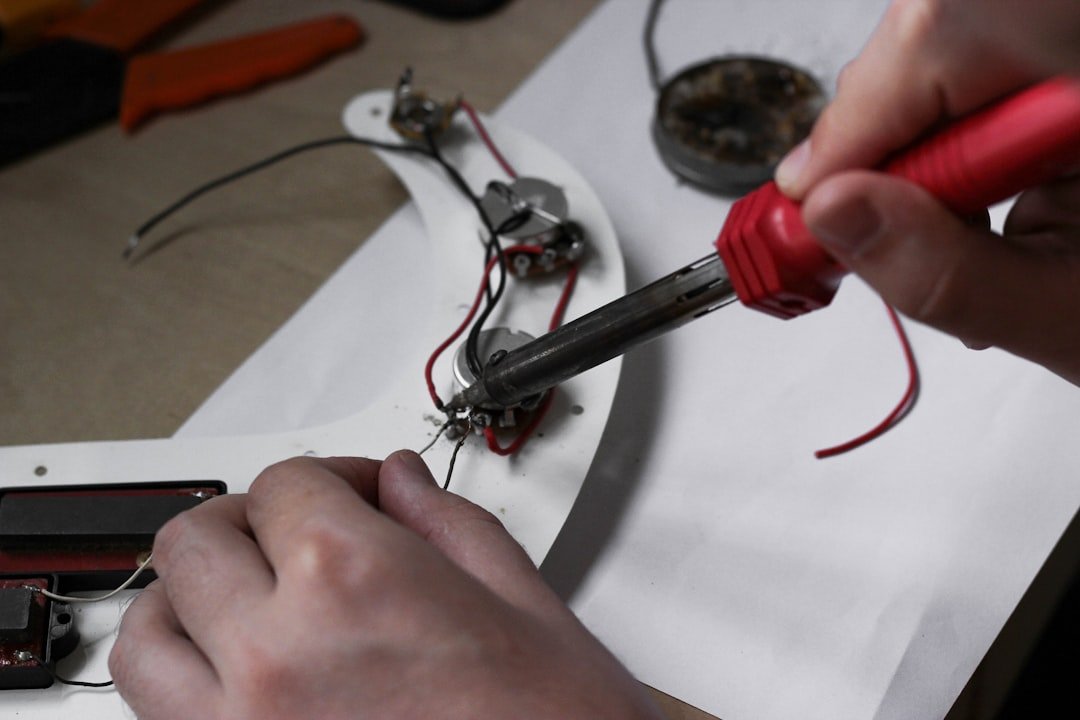Potentiometers, commonly referred to as "pots," are fundamental components in electric guitars and basses. These variable resistors are used to control volume, tone, and sometimes more complex circuit behaviors such as blending pickups or adjusting midrange frequencies. This article offers an exhaustive guide on potentiometers, breaking down their types, functions, values, tapers, and specific use cases in musical instruments.
1. What Is a Potentiometer?
A potentiometer is a three-terminal resistor with a rotating contact (wiper) that forms an adjustable voltage divider. In musical instruments, pots typically serve three roles:
-
Volume control: Attenuating the signal from pickups.
-
Tone control: Working in conjunction with capacitors to roll off treble frequencies.
-
Blend/Balancer control: In active basses, used to mix two pickups.
2. Potentiometer Types
a. Rotary Pots
These are the most common types found in guitars and basses. They rotate through approximately 270°.
b. Push-Pull / Push-Push Pots
These pots include a switch that is activated by pulling (or pushing) the knob. They allow additional functions, like coil splitting, phase reversal, or activating a mid-boost circuit.
c. Stacked (Concentric) Pots
Concentric pots consist of two independent pots stacked vertically. Common in active basses, they allow two controls (e.g., bass and treble) in a single pot position.
d. Slide Pots
Rare in guitars but sometimes found in effects or older synths, these are linear sliders rather than rotaries.
e. Digital/Encoder Pots
Used in modern digital or hybrid systems, these don’t operate with resistance but encode turning motion as digital data. Rare in traditional lutherie
3. Potentiometer Values (Resistance)
The resistance value of a pot affects tone, especially in passive circuits. Here’s a breakdown of the most common values and their tonal consequences:
-
25kΩ: Typically used in active circuits with onboard preamps or active pickups. Passive pickups will lose significant high-end with pots this low.
-
50kΩ: Also common in active electronics. Provides slightly less loading than 25k, allowing for marginally brighter response. Rare in passive circuits.
-
100kΩ: Occasionally used in older or specialized circuits. In passive guitars, it slightly darkens the tone compared to 250k.
-
150kΩ: Rare but seen in some hybrid designs where a compromise between 100k and 250k is needed.
-
250kΩ: Standard for single-coil pickups (e.g., Fender Strat and Tele). Provides a warmer, rounder tone by allowing more high frequencies to bleed to ground.
-
300kΩ: Sometimes found in vintage Gibson instruments. Offers a tonal middle-ground between 250k and 500k.
-
500kΩ: Common for humbuckers. Brightens the tone by allowing less treble to bleed. Used in most Gibson-style guitars.
-
550kΩ: Used in premium or matched pots (e.g., WD/CTS custom). Offers even less load than 500k and more consistent performance due to tight tolerance.
-
1MΩ (1,000kΩ): Preserves maximum treble. Found in some Fender Jazzmasters and Jaguars. Can sound harsh or brittle in some setups but ideal for certain high-impedance pickups or when a very bright sound is desired.
-
2MΩ and above: Extremely rare in guitars. Mostly used in experimental circuits or high-Z piezo buffer applications.
The rule of thumb: the higher the resistance, the less signal is bled to ground—preserving treble.
4. Pot Taper: Audio vs Linear
a. Audio (Logarithmic) Taper
-
Matches human hearing perception.
-
Volume appears to increase more naturally.
-
Common for volume pots.
b. Linear Taper
-
Equal resistance change across the turn.
-
Often used for tone controls, though also seen in volume pots in some brands.
c. Custom / Modified Tapers
-
Brands like CTS or Bourns may offer proprietary tapers optimized for smoother control, faster volume swells, or blend functions.
5. Construction and Quality Factors
-
Track Material: Carbon (standard), Cermet (more durable), Conductive Plastic (smooth, long life).
-
Shaft Type: Split shaft (knurled, accepts push-on knobs) or solid shaft (requires set-screw knobs).
-
Shaft Diameter: Common sizes are 6mm (metric, used in most imports) and 1/4" (used in US-made instruments).
-
Mounting Thread: Imperial vs Metric thread pitch.
-
Tolerance: High-quality pots have tighter tolerances (±5-10%), ensuring consistent values.
6. Specialty Pots and Mods
-
No-Load Tone Pots: Bypass the tone circuit when fully open, giving a slightly brighter tone.
-
Blend / Pan Pots: Dual-ganged, reverse-taper pots that allow smooth mixing of two signals (e.g., neck and bridge pickups).
-
Detented Center Pots: For EQ controls, often with a center click (e.g., in active circuits).
-
Push-Push with DPDT Switches: Useful for multiple circuit paths or LED switching.
7. Pots in Passive vs Active Circuits
Passive Circuits
-
Simpler wiring.
-
Tone is more sensitive to pot value and taper.
-
High resistance or no-load pots can prevent treble loss.
Active Circuits
-
Impedance buffered; pot values are less critical to tone.
-
Frequently use lower values (e.g., 25kΩ or 50kΩ).
-
More versatile functions (e.g., sweepable mids, active blend).
8. Common Potentiometer Brands
-
CTS: Standard in vintage and boutique guitars.
-
Bourns: Known for smooth operation and low noise.
-
Alpha: Economical and widely used in mid-range instruments.
-
EMG: Special low-impedance pots for active pickups.
-
WD/Custom CTS Mods: Modified tapers or 550k values with tighter tolerances.
9. Installation Tips & Best Practices
-
Always verify pot resistance with a multimeter.
-
Use shielding and grounding to reduce noise.
-
For vintage-style tone, use paper-in-oil caps with 250k or 500k pots.
-
Log taper for volume, linear for tone (unless otherwise specified).
-
If doing coil splits or phase switching, consider push-pull pots to avoid drilling new holes.
10. Future Trends: Smart Pots and Custom Electronics
-
Digitally Controlled Analog Circuits: Growing in pedal and amp design.
-
Smart Pots: With embedded memory for presets.
-
Modular Systems: Replaceable control modules without soldering.
Conclusion
Understanding potentiometers is essential for any guitarist, bassist, or luthier looking to fine-tune their instrument’s response and versatility. Whether it's choosing the right resistance value to match pickups or installing advanced switching options, pots offer an immense amount of control in a simple format. As electronics continue to evolve, the role of pots in shaping tone remains both foundational and fertile ground for innovation.





Share:
Top 5 signs your guitar needs a setup
Truss Rods and Neck Relief: A Luthier’s Guide to Guitar Setup